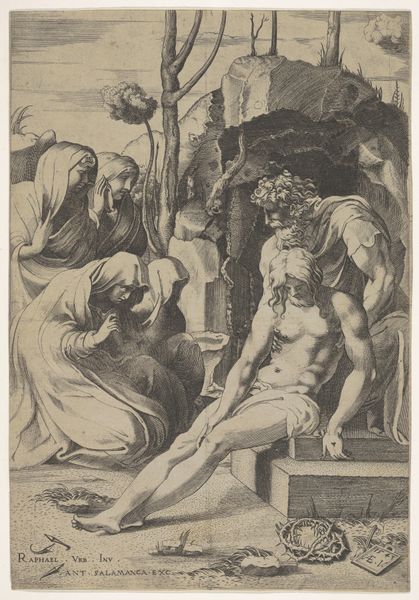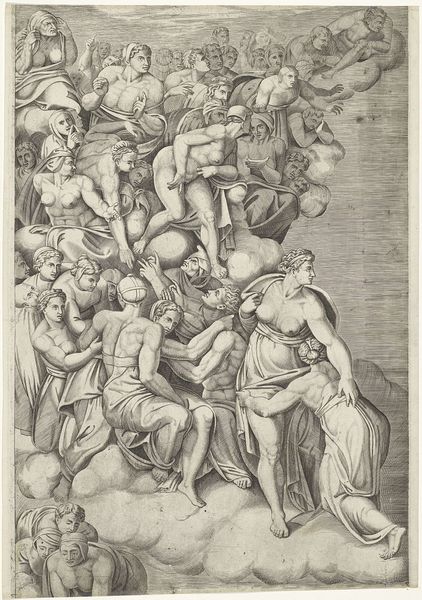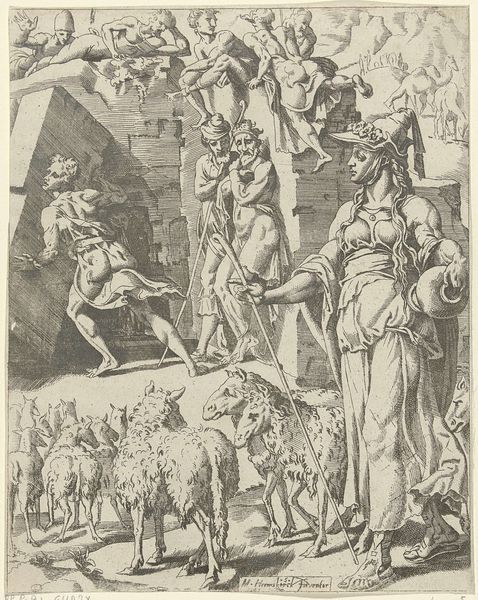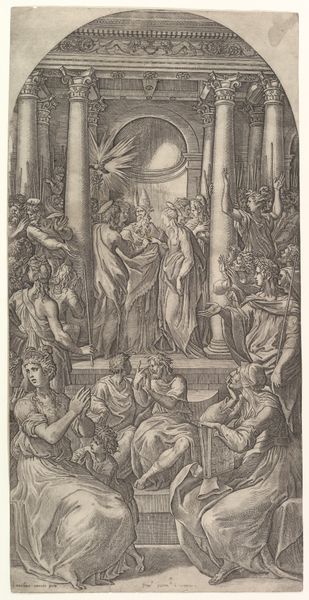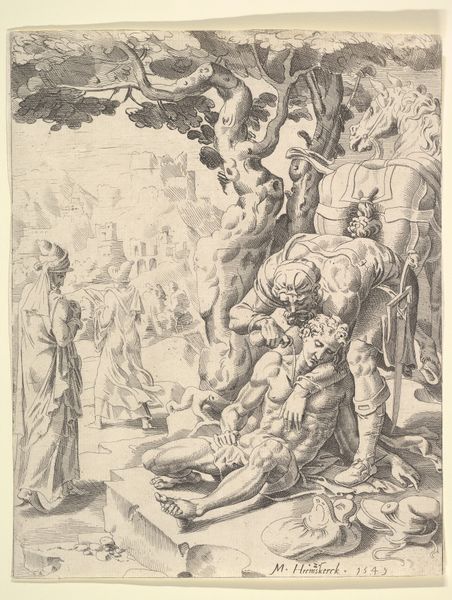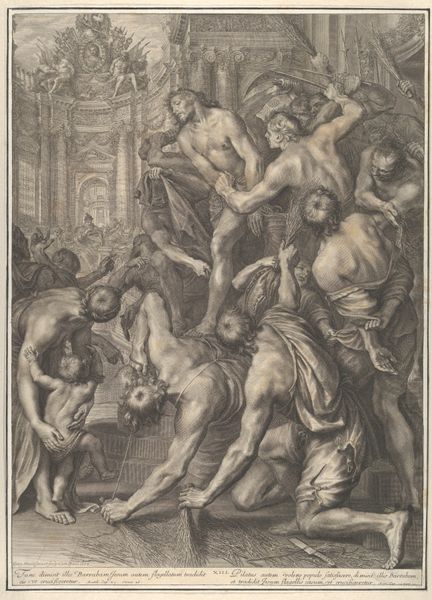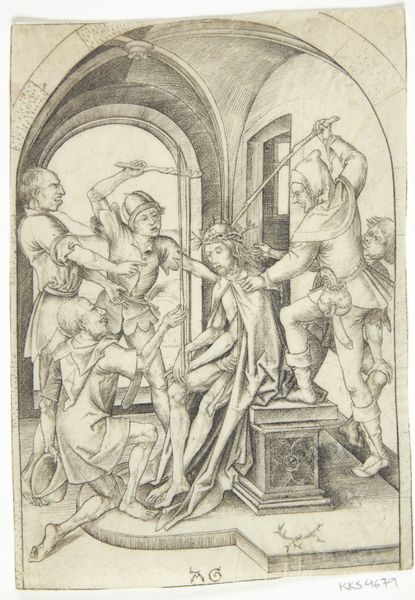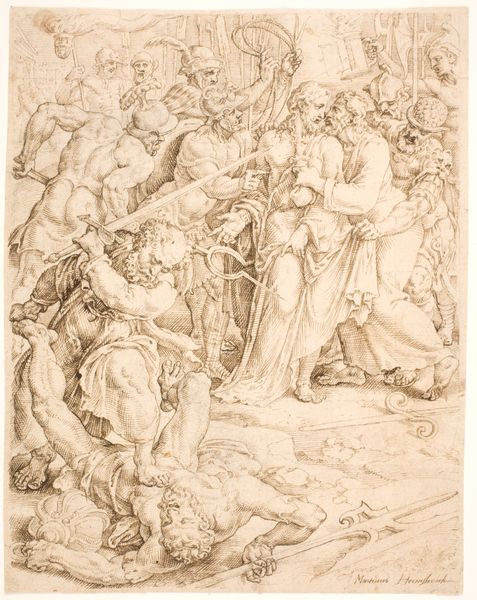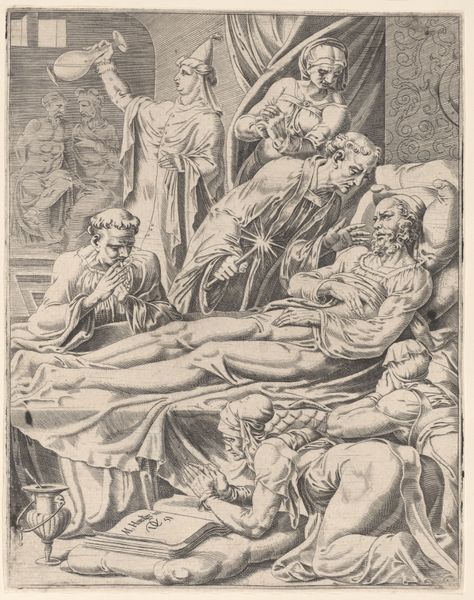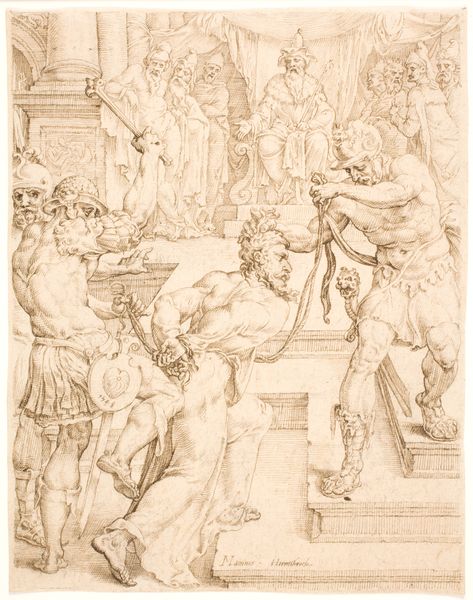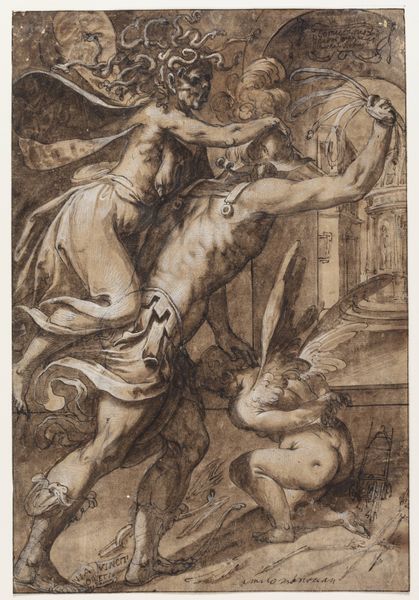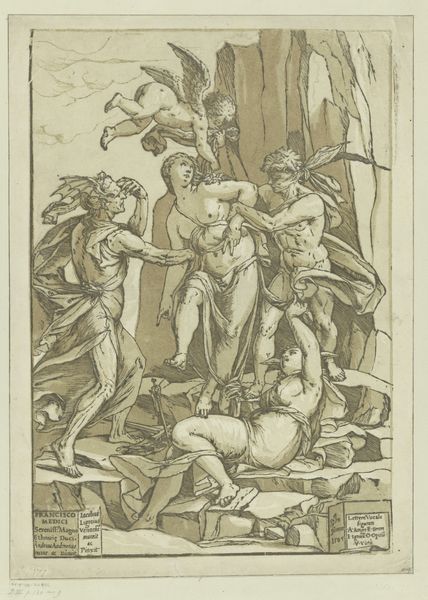
print, engraving
#
narrative-art
# print
#
mannerism
#
figuration
#
line
#
history-painting
#
engraving
Dimensions: width 196 mm, height 246 mm
Copyright: Rijks Museum: Open Domain
Curator: Dirck Volckertsz Coornhert’s 1551 engraving, "Susanna wordt beschuldigd van overspel," currently at the Rijksmuseum, immediately strikes me as intensely wrought. The density of lines creates a palpable tension. What's your first take? Editor: Well, the narrative imagery feels immediately significant. The positioning of Susanna, accused and vulnerable before the elders, evokes centuries of artistic representations of female innocence besieged by male authority. Curator: Right, it's all about the staging, isn’t it? Considering that it's an engraving, we should focus on the means by which the image was made and reproduced. How might that affect its interpretation? Editor: Engravings like these, with their meticulous detail, circulated widely, didn't they? So, the symbolic weight would've been amplified through mass production, spreading these depictions and, I'd argue, reinforcing existing societal power structures surrounding gender. Curator: Precisely. Coornhert was involved in broader conversations regarding labor. By carefully regulating lines on a copperplate and strategically planning each print, his work comments on artistic and industrial progress as much as it is the tale of Susanna. What about specific imagery? Do the figures conform to period iconography? Editor: Yes, and note the specific gestures—Susanna's plea, the accusatory pointing, the judgement of the elders. Each is freighted with meaning within a historical and cultural context. We can interpret the whole print as being a commentary on virtue tested and justice threatened. Even the Mannerist style emphasizes that inherent tension and instability. Curator: Indeed. The stylistic excess, all those writhing lines, that contributes to an emotional texture, yes? Though one might also say that choosing engraving served particular artistic functions – cheapness, efficiency, etc. Editor: Agreed. The symbolic charge coexists with and, in a way, informs those practical decisions, because it does speak to a common language of justice, of innocence and guilt that transcends mere materials or technique. Curator: This tension, between production and profound significance, becomes increasingly pertinent as this print survives, and remains, a crucial and difficult subject. Editor: Absolutely. Coornhert’s choices—and ours in studying it—continue to prompt crucial considerations of cultural memory and visual responsibility.
Comments
No comments
Be the first to comment and join the conversation on the ultimate creative platform.
